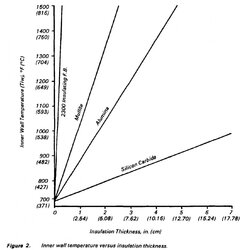Huntindog1
Minister of Fire
I heard that there are some new wood smokers being designed that they replace firebricks with 3/4" plate steel as it has a higher density and higher mass.
Behind the 3/4" plate steel they are putting like 1" to 2" of Ceramic Koawool to cut the conduction down and provide the insulation needed to keep things hot. Would take longer to heat up like a soapstone.
Behind the 3/4" plate steel they are putting like 1" to 2" of Ceramic Koawool to cut the conduction down and provide the insulation needed to keep things hot. Would take longer to heat up like a soapstone.



